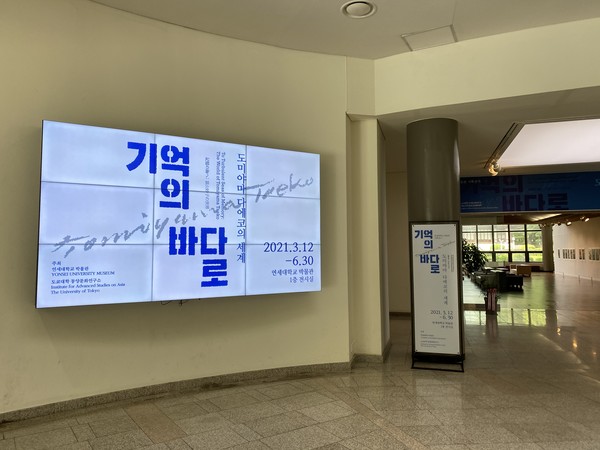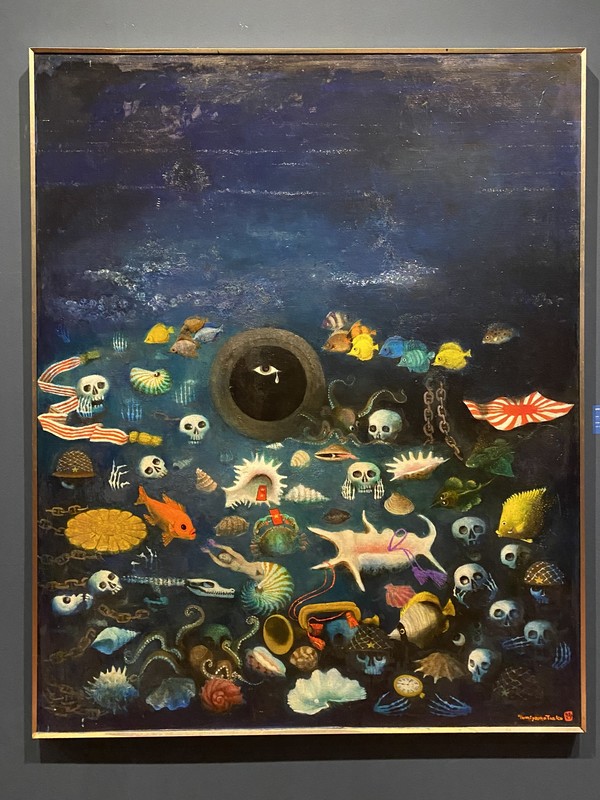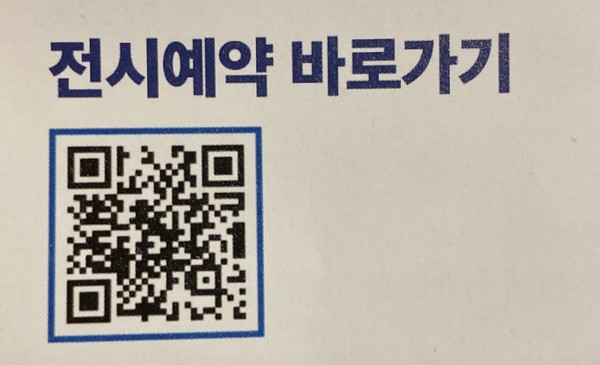Remembering the past through Tomiyama Taeko’s artworks

“I DO not create beautiful artworks,” said Japanese artist Tomiyama Taeko when a viewer complimented her works for their beauty. What Taeko embodies in her artwork is the pain of comfort women, mine workers, and poets under Japanese colonialism. This year, to celebrate Taeko’s 100th birthday, Yonsei University Museum has opened a special exhibit “To Turbulent Seas of Memory- The World of Tomiyama Taeko” with the help of Tokyo University’s Oriental Culture Research Institute. The exhibit gives us an authentic yet unexpected account of our history that we should never forget.
Introducing “The World of Tomiyama Taeko”
Tomiyama Taeko is a Japanese visual artist whose artworks are centered on complicated and sensitive themes regarding war, violence, and colonial hardship. Born in Kobe, Taeko spent her teenage years in Manchuria and went to university in Tokyo. She then traveled to different cities in Japan, South America, and South Korea. Based on those experiences, she illustrates the variety of tragic realities spanned across history: the colonization of Latin America, maltreated Japanese mineworkers, forceful oppression of the Gwangju Uprising, and the Fukushima disaster. She stands out from her peers by, despite her Japanese nationality, not having stayed silent during the dreadful colonial period in Korea; she is renowned for her honest depiction of Japanese colonialism and her testification about the injustice she witnessed. “Her artworks are not just individual pieces of work, but rather an art form of social movement,” expresses Shin Ji-young (Prof., College of Liberal Arts and Institute of Korean Studies, Yonsei Univ.), in an interview with The Yonsei Annals.
“To Turbulent Seas of Memory- The World of Tomiyama Taeko” takes us on a historical journey as seen through Taeko’s eyes. The exhibit is divided into five zones, each dealing with a different remembrance: Memories of war, Memories of those underground, Memories for poets, Memories of Gwangju, and Memories of Fukushima. According to Manabe Yuko (Prof., Institute for Advanced Studies on Asia, Tokyo Univ.), by displaying “nomadic art” that “break open from the two-dimensional world”, this exhibit invites the audience into a sea of stories transcending time and space[1]. “We cannot separate her works from their context. They should be appreciated together,” explains Professor Shin. With Taeko’s artwork displayed along with saddening yet powerful background music, you will feel as if you, too, are underneath the dark, silent, yet turbulent sea of memories.
The memories of war
The first zone is Memories of war, which primarily deals with the struggles victims faced during the peak of Japanese colonization. “I am a Japanese myself, but I hated the Japanese,” expressed Taeko[2]. She hopes that her illustration of the war atrocities would push perpetrators to take responsibility.
One of the main artworks in this section is Cries of bitter resentment echo from the wall – for Yun Dong Ju[3], a Korean poet who died in the Fukuoka prison (1984). This oil painting depicts the tragedy of Poet Yun’s exposure to brutal maltreatment and eventual death in the Fukuoka prison. While her use of dark colors and images of rats and barbed wire create an eerie atmosphere, her works do not portray infinite darkness. With a small butterfly, Taeko also alludes to hope and vitality, signaling the possibility of reconciliation between the countries.

Taeko also created a collection “Memories of the sea” dedicated to comfort women, consisting of oil paintings and collages. For instance, At the Bottom of the Pacific (1985) is a grievous illustration of the bottom of the ocean filled with chains and skulls. She conveys the comfort women’s resentment through the depiction of a crying eye behind a dark locked pipe. While the subject matter is not explicitly expressed, the audience can empathize with the survivor’s yearning for justice.

This zone continues to display artwork specifically dedicated to those victimized by the colonists during the war. According to Professor Shin, Taeko saw herself as a perpetrator due to her nationality, and she was determined to do her part to alleviate the situation. The ultimate purpose of her artwork is to recount her version of the historical struggles of minorities and let the fellow Japanese resonate with the devastation of our ancestors that we remember and consequently take accountability.
The memories of Gwangju
As you enter the next zone, a huge wall filled with lithographs will catch your eyes. The nearby wall reads, “They overcame their fear, not for them, but us, not for the present, but the future. Yet can we continue to live the way we do today?” The works in this section deal with the 1980 Gwangju Uprising that led to the death of countless students and citizens.
This series incorporates a different artistic technique from her previous works, lithography. Taeko thought that thick lines could most accurately represent the Korean citizen’s resistance effort, even saying that “lithography was made specifically for Gwangju,” according to Professor Shin. The black and white of the characters are contrasted with the vivid background color, and the thick dynamic lines emphasize the facial expressions and body movements, giving a stronger “Korean” sentiment. The lithograph Pieta in Kwangju (1980) is not solely a reportage of what happened in Gwangju, but one that invites the viewers to indulge the despair captured in her artwork. In this lithograph, Taeko portrays someone grieving over the death of a loved one, accompanied by another who has its arms high up in the air, screaming for democratization to accentuate the perseverance of the Gwangju citizens amid the horrid atrocities[1].

Another piece that depicts the horrors of the Gwangju Uprising is Pregnant Woman Stabbed and Killed (1980). This macabre lithograph shows a dead pregnant woman lying on the ground, with blood all over her body. Her strong facial expressions and twisted body posture show her inability to be liberated from the pain even after her death highlighting how the repercussions of this incident continue to haunt the victims and their families.

Lithographs, each depicting different scenes of the uprising, take up the entire wall. Taeko’s portrayal of the Gwangju Uprising not only shows her attachment and sympathy for Korean history but also reemphasizes her goal to make these significant historical accounts be heard and remembered.
The power of artistic expression
For Taeko, her art is not only to convey a message to its audience but also a conversation with herself, in search of understanding. The commitment to her work is also her way of taking responsibility for her heritage. By using diverse forms of media, including oil painting, collages, slideshows, and lithographs, she “redresses the wrong” inflicted on the minorities, and “brings their stories into public remembrance”[4]. Celebrated for expanding the boundaries of art and integrating digital technology, Taeko also built a working relationship with musicians and movie producers to make her artwork more accessible. Professor Shin describes Taeko’s works as “avant-garde” that come directly into our lives. She also emphasizes how “art” should be about trying to accurately reflect the present day, to depict events regardless of how involved we are, and to sympathize with the minorities—just like Taeko’s works.
Visiting this exhibition would provide an opportunity for Yonsei students and visitors to not only be able to appreciate Taeko’s powerful artwork, but also contemplate on yesterday’s pain, today’s growth, and tomorrow’s direction.
Period: 2021.03.12-2021.06.30 (Mondays~Saturdays)
Entry Hours: 11:00 a.m., 14:00 p.m., 16:00 p.m. (Reserve via Naver or QR Code)
Admission: Free
Address: Yonsei University Museum 1F

[1] “To Turbulent Seas of Memory- The World of Tomiyama Taeko” Exhibit Brochure
[2] Hajike Hosenka (Pop Out Balsam Seeds!) Film produced by Tsuchimoto Noriaki
[3] Yun Dong-ju: A Korean poet famous for his poems Foreward and Counting the Stars.
[4] Tomiyama Taeko’s Art and Remembrance of the Asia Pacific War by Laura Hein

